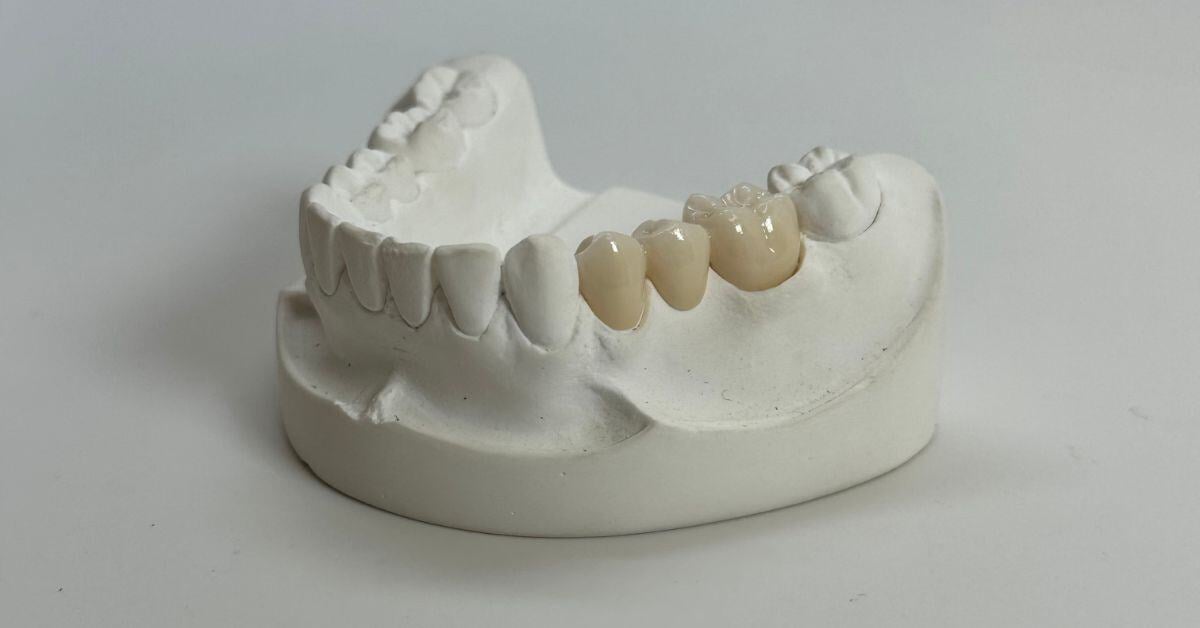Choosing the right material for permanent crowns is crucial for every dental practice. With modern advancements in dental technology and materials, dentists and office managers have more options than ever.
Being aware of current and emerging trends will help your office remain as innovative as it is reliable for patients. Dive into this walkthrough of the top trends in material considerations for permanent crowns to learn more.
Choosing eMax or Layered Zirconia for the Best Aesthetics
When it comes to aesthetics, eMax and layered zirconia are leading the charge. Layered zirconia showcases excellent translucency, and eMax brings an impressively natural look to the design. Simply put, both materials remain a go-to for patients who desire an aesthetically pleasing crown.
Emax, known for its strength and beauty, is typically the go-to for anterior crowns. Layered zirconia, on the other hand, provides a blend of strength and aesthetics, making it suitable for both anterior and posterior crowns.
Dentists often face the challenge of balancing aesthetics with functionality. Emax and layered zirconia solve this problem by offering high aesthetic value without compromising on durability.
Patients are more likely to be fully satisfied with their dental work when they leave with a crown that looks and feels natural. It's essential to consider patient preferences when choosing between eMax and layered zirconia. Some patients prioritize aesthetics, while others may focus on the longevity of the crown.
Understanding these preferences can help you tailor your recommendations accordingly.
Not Mixing Different Materials
Mixing different materials in a single restoration project can lead to inconsistencies in color, texture, and durability.
It’s best to stick with one material type for a harmonious and effective result. Mixing materials can also complicate the bonding process, leading to potential issues down the line.
Choosing a single material simplifies the workflow for dental technicians and ensures a consistent outcome for the patient. This approach minimizes the risk of complications and enhances the overall quality of the dental restoration.
Incorporating a consistent material strategy in your practice not only improves patient satisfaction but also streamlines operational efficiency.

Putting a Focus on Space, Span, and Clearance
Space, span, and clearance are critical factors that influence the choice of crown material.
Adequate space ensures that the crown fits comfortably and functions properly. The lifespan is also crucial, as longer spans may require stronger materials, such as layered zirconia. After all, when you’re installing a permanent crown, you need a material that will remain natural-looking and strong for years.
Clearance refers to the amount of vertical space available for the crown. Insufficient clearance can lead to functional issues and discomfort for the patient. Ensuring proper clearance is vital for the longevity and success of the crown.
Tooth Reduction
Another detail that dictates material choice is the level of tooth reduction the patient requires. Reduction requirements will vary between materials, so make sure you have all this data before applying a permanent crown.
Some materials, like eMax, require more reduction to achieve optimal results. Others, like zirconia, may need less reduction, preserving more of the natural tooth structure.
Preserving natural tooth structure is beneficial for the patient's long-term oral health. It reduces the risk of further decay and maintains the integrity of the tooth. Therefore, choosing a material that requires minimal reduction can be advantageous in many cases.
Discussing the amount of reduction needed with your patients can help them understand the process and set realistic expectations. Transparency in this aspect can build trust and confidence in your practice.
Understanding these key factors helps in selecting the right material that balances strength and aesthetics. Proper planning and assessment during the initial stages can prevent complications later on.
Challenges With Prep/Stump Shade
A key trend with material considerations for permanent crowns is the necessity to overcome challenges with stump shades.
The color of the prepared tooth, or stump shade, plays a crucial role in the final appearance of the crown. A dark stump shade can affect the translucency and color matching of the crown material. Choosing the right material can help mask the underlying color and achieve a natural look.
Layered zirconia and porcelain-fused-to-metal (PFM) are excellent choices for cases with a dark stump shade. These materials provide better coverage and can effectively mask the underlying color, ensuring a more aesthetically pleasing result.
It's important to communicate with your dental lab about the stump shade to ensure the crown is properly fabricated to match the desired color. This collaboration can lead to better outcomes and higher patient satisfaction.

Selecting Materials for Optimal Incisional Translucency
Incisional translucency is a critical factor for the aesthetics of permanent crowns. Layered zirconia offers the best incisional translucency, closely mimicking the natural appearance of teeth. This material provides the right balance of strength and aesthetics for front teeth.
Patients are often concerned about the appearance of their front teeth, and layered zirconia addresses these concerns effectively. It allows for a natural look that enhances the patient's smile and boosts their confidence.
Investing in materials that offer high incisional translucency can differentiate your practice and attract patients seeking high-quality aesthetic dental work. It positions your practice as a leader in cosmetic dentistry.
Life of a Tooth
Considering the life of the tooth is essential when selecting crown materials. Some materials are better suited for long-term restorations, providing durability and resilience. Zirconia and eMax are known for their longevity, making them ideal for permanent crowns.
Patients expect their dental restorations to last, and choosing materials with proven durability can meet these expectations. Long-lasting crowns reduce the need for replacements, saving time and money for both the patient and the practice.
It’s important to know that temporary crowns aren’t solely short-term solutions. For long-term temporaries, dental composite remains a suitable material solution.
Educating patients about the expected lifespan of different crown materials can help them make informed decisions. This transparency builds trust and positions your practice as a reliable partner in a patient’s oral health care.
Observing Trends With Permanent Crowns
Selecting the right material for permanent crowns involves considering factors such as aesthetics, space, stump shade, and the life of the tooth.
By understanding these factors, dentists and office managers can make informed decisions that enhance patient outcomes and satisfaction.
At DDS Lab, our crown dental lab excels in restorations using eMax and zirconia due to the high-quality results both materials deliver. Use your new understanding of permanent crown materials to achieve the best results every time.
